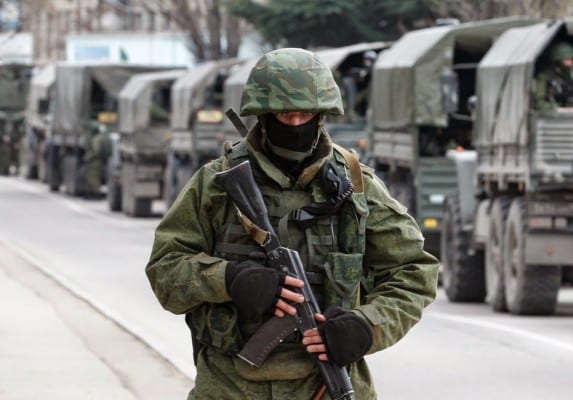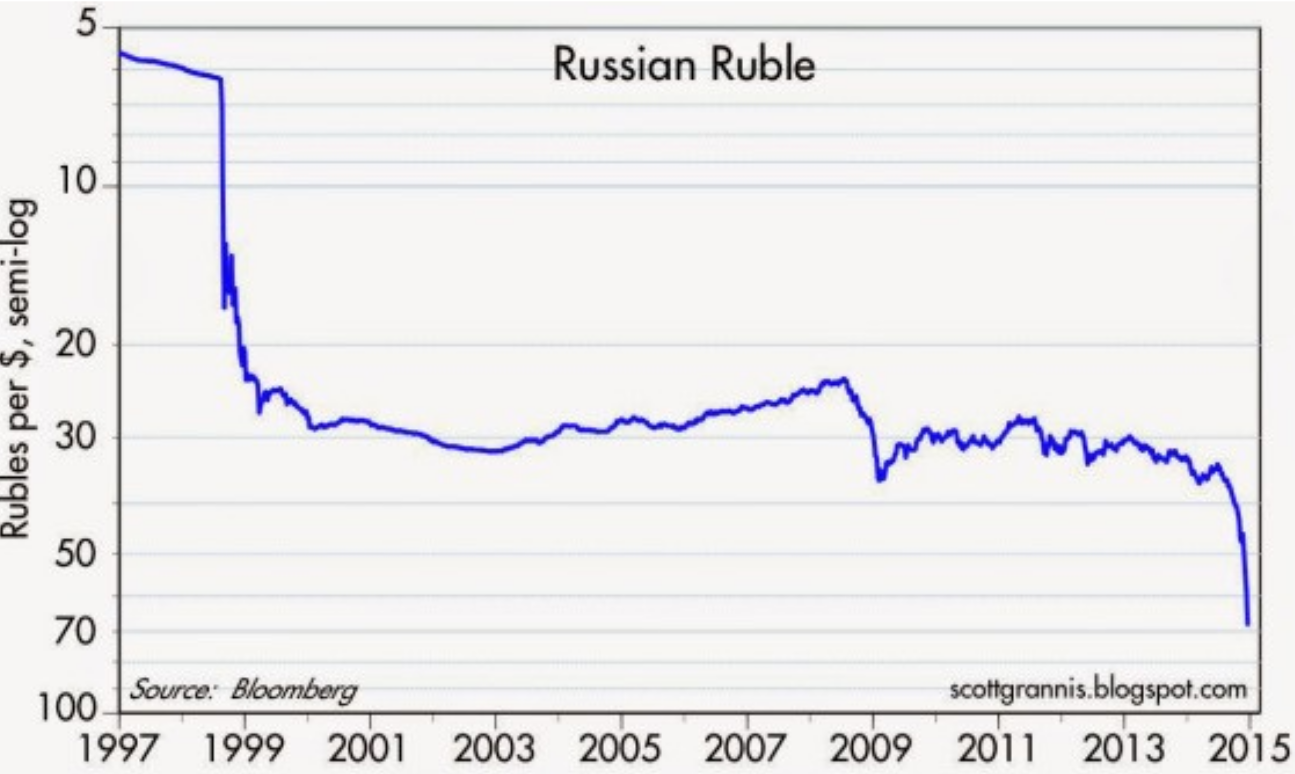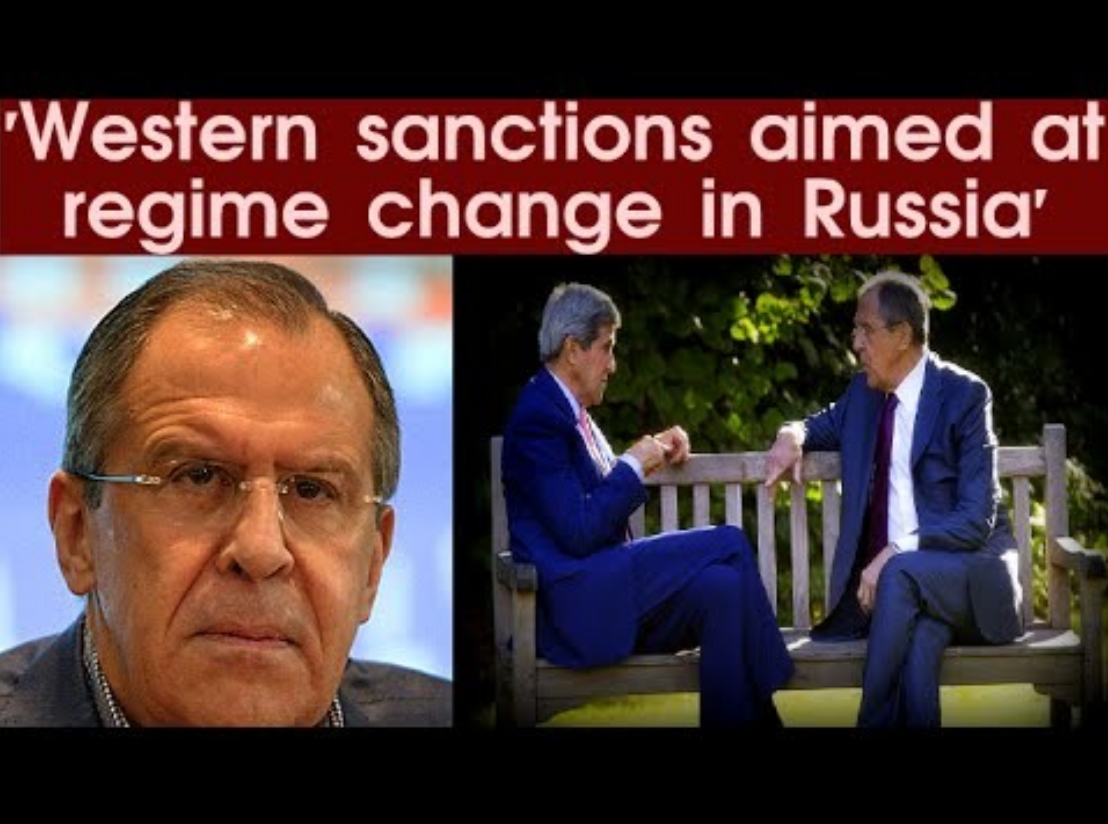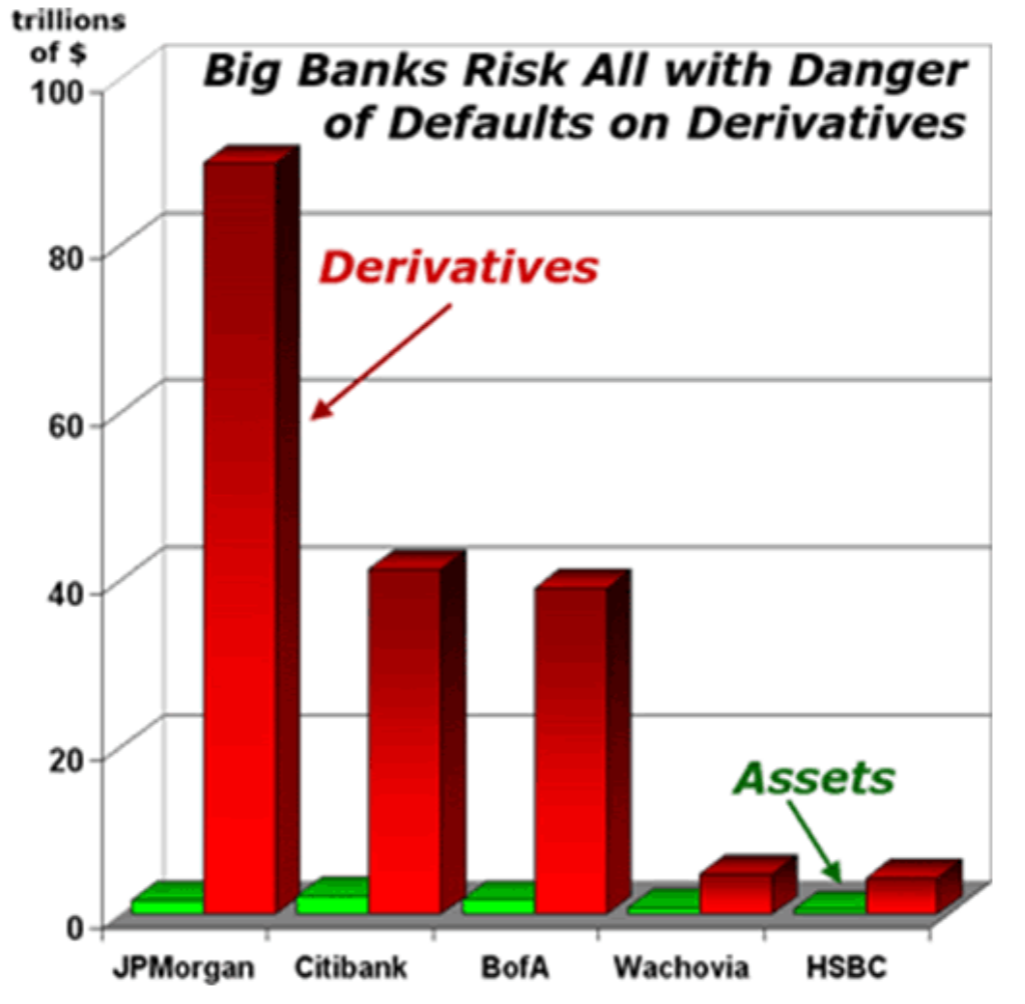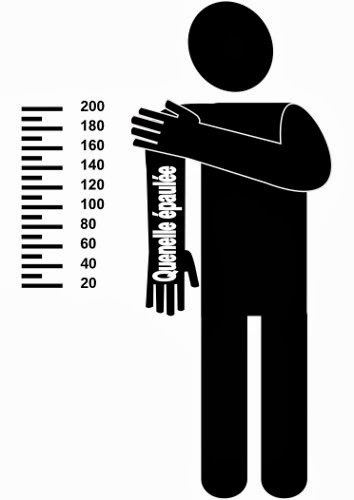The Saker’s choices for “Men of the Year”
YEAREND EDITION
PLUS:
• News and commentary on Ukraine & Novorussia;
• The financial elites’s machinations that currently threaten a global economic meltdown;
• Insider look at the making of the Russia/China self-defense alliance, the new geopolitical double helix!
[dropcap]It’s this time[/dropcap] the title of “Saker man of the year” should go to the Syrian solider without whom neither Russia, nor Iran, nor Hezbollah would have been able to save Syria from the NATO-Wahabi aggression. I also listed Vladimir Putin as a “runner up” and Sayyed Hassan Nasrallah as honored by a “special distinction”. Looking back, I would say that these were very good nominations and I hope that this year I will get it right again. So here we go.
I decided that, if anybody, the Polite Man in Green deserved this honor because of the absolutely brilliant way he liberated Crimea and protected the Crimean people during the referendum while the Novorussian volunteer deserved the distinction because of the no less brilliant way he defeated a much larger Ukrainian force.
The Polite Man in Green:
It is often forgotten that the Ukrainians had a very large force on the Crimean Peninsula composed of their best trained and equipped units. The operation to disarm them all with a minimum of violence was far from being risk free. Of course, the Ukrainians had no chance to prevail against the Russian Special Forces, but they sure had the manpower and resources to give them a very good fight. What prevented them from doing so was the lightening speed of the Russian operation as well as the overwhelming force clearly represented by a large number of fully equipped Spetsnaz operators. Simply put – the Ukrainians understood that they had no chance, none at all, against such a formidable enemy. The calm but very self-confident behavior of these Polite Men in Green psychologically crushed the Ukrainian will to resist.
But that is not why I wanted to honor these men. There are, after all, plenty of skilled soldiers worldwide. No, the main the reason why I felt that these men deserved to be recognized is because they were truly liberators in the most noble sense of the word. The AngloZionist Empire and the Nazi junta leader in Kiev had already decided that Crimea was theirs, the USN even had plans to build special facilities on the peninsula and they were all sure that there was nothing the locals could do about it, that they were irrelevant. The Polite Man in Green proved them wrong: they liberated them and gave them a chance to freely decide their future themselves, they gave them back a dignity which had been taken away from them by Nikita Khrushchev.
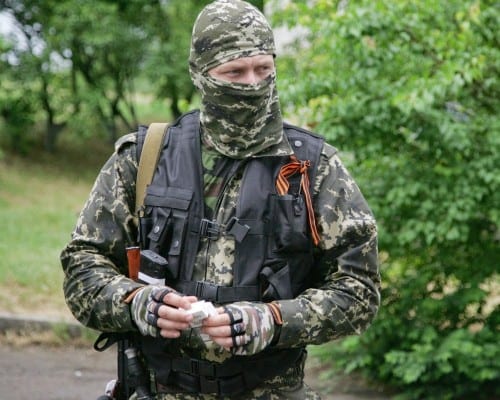 |
| The great Novorussian volunteer: they don’t come any finer or braver. |
The Novorussian volunteer:
Here again I am honoring a collective “man”, all those who did not wait for an order from above or for somebody else, to do the right thing and who decided that they would not stand by and would fight against the Nazi regime trying to oppress their people.
Unlike the Polite Man in Green, the Novorussian Volunteer had all the odds stacked against him and even his hope that the Russian Federation would do for Novorussia what she had done for Crimea was soon proven wrong: no Polite Men in Green were sent to Novorussia (or very few). The Nazis had an overwhelming advantage in firepower, in armor, in artillery, in heavy weapons and they had a total control of the skies, yet – unlike the Ukrainian soldiers in Crimea – the Novorussian volunteer did not let his will to resist be crushed, he fought on, very skillfully, and not only defeated his enemy but even launched a highly successful counter-offensive which was stopped on political grounds but which could have been sustained much further (though probably not as far as some believe it could have).
Together, the Polite Man in Green and the Novorussian volunteer stand against the Empire and its Nazi allies just as the Syrian soldier stood against the Empire and his Wahabi allies. All of them have proven, yet again, that the most powerful weapon in any conflict still remains the fighting spirit and the individual courage of the fighting man.
 |
| Vladimir Putin and Xi Jinpin |
The runner up(s): Vladimir Putin and Xi Jinpin
For a second time I am going to choose Vladimir Putin as the runner up for “2014 Saker Man of the Year”, but this time with Xi Jinpin. Together these two men have taken the unprecedented step of creating something much more complex than just an strategic alliance: they have decided to integrate their two nations in a symbiotic relationship which will truly turn them into a type of “Siamese twins” except that they will share most of their “vital organs” while keeping separate “heads”. Through a series of huge multi-billion contracts in such key areas as energy and defense (along many more comparatively smaller ones), the Russian and the Chinese leaders have basically decided to “marry” their two nations for a common future. Not only that, but by not following the US model of hegemonic and planetary full-spectrum dominance Russia and China are now offering a new model of international relations one in which multi-polarity is actively sought, in which security is viewed as collective and in which the sovereignization, not subjugation, of the rest of the world is promoted.
Thanks to Vladimir Putin and Xi Jinpin, we will probably end up with a new world order, but most definitely not the one envisioned by AngloZionist imperialists and for that I think that they most definitely deserved to be recognized.
 |
| Ramzan Kadyrov |
Special distinction: Ramzan Kadyrov
[dropcap]For many years[/dropcap] already Ramzan Kadyrov has been the driving force behind the Chechen miracle. Let’s remember what Chechnia looked like in 2000: Grozny was in such ruins that many seriously advocated completely abandoning the city and relocating the capital of Chechnia elsewhere. All the western “experts” predicted that the Chechen insurgency would never be defeated. Most importantly, it sure looked like Russians and Chechens hated each other with a dark and burning passion. Fifteen years later, Grozny has turned into a superb city, with the lowest crime rate in Russia, the Wahabi insurgency has been comprehensively defeated, and traditional Sunni Islam is triumphant over Wahabism which has been completely eradicated. As for the terrorist threat, it has become so low that when in the recent incident a group of Wahabi terrorists penetrated deep inside Grozny the world found out that the city did not even have checkpoints or roadblocks because they had been removed by the authorities a long time ago.
Furthermore, Ramzan Kadyrov fully took on the role of “protector of the Russian people” not only politically, but by getting personally involved in the conflict in Novorussia: many know that Chechen volunteers are fighting against the Nazi forces, but most people ignore that Chechnia is also accepting many Ukrainian refugees who are finding a safe heaven and, for many, a new home in the small republic.
And through this Ramzan Kadyrov arguably achieved his most amazing miracle: whereas by 2000 the Russian people hated and despised the Chechens whom they saw as vicious and evil enemies, nowadays Russian see Chechen as their most courageous and faithful allies. It is not an exaggeration to say that Ramzan Kadyrov has restored the honor of the Chechen people in a dramatically short period of time.
Needless to say, it is precisely for all these reasons that Kadyrov is absolutely hated by the Empire and its propaganda machine and Kadyrov is presented as a bloodthirsty thug. Truth be told, Kadyrov certainly did display some very thug-like behavior, especially in the past, but there is a lot more to the man than his natural swagger: he is a deeply principled, religious and patriotic leader who has shown in many difficult circumstances that he has fully inherited his father’ wisdom and personal courage.
Now it is your turn. Who are your men/women of the year 2014?
Cheers,
The Saker
New testimony about the shooting down of MH17
Interesting news this morning: the Russian newspaper Komsomolskaia Pravda has interviewed a man who claims to have been a witness to the take-off of three aircraft one of which allegedly shot down MH17. Thanks to the incredible work done by Kazzura the full video with English subtitles is already available today. Check it out:
I will notice that there are several mutually contradictory versions circulating out there. For example, one version spoke of a Polish pilot, this one speaks of a Ukrainian (with a very Russian last name), some versions speak of one aircraft, other of two and this one even three, some speak of a SU-25, others of a MiG-29 or even a SU-27 (such as the alleged satellite photo from the student at MIT). There are several reasons for such discrepancies.
For one thing, coming up with a “testimony” is a surefire way to make money. Second, some witnesses might have seen something but not paid attention at the time and then “reconstructed” what they saw. Finally, witnesses are like the folks holding different parts of the elephant – they see only a part of the bigger picture.
I have to say that I still am basically sticking with the version I put forth on August 4th: MH-17 was shot down by a single SU-25, guided towards its target by the long-range “Kupol” radar of a BukM1 battery who engaged MH17 with a single R-60 infrared-guided air-to-air missile which hit one of the engines and then who “finished off” MH17 with a volley of gunfire from its canon. Still, I have to add two things:
a) it is possible that even though only one SU-25 engaged the MH17 there were other two loitering nearby to make sure to intercept MH17 because the problem with flying an SU-25 at high altitude is not that it cannot get high enough, but that at high altitude the engines of the SU-25 (which are designed for close air support or “tree hugging”) cannot provide much speed thus the flight envelope of a SU-25 at altitudes around 7’000m-10’000m is very narrow.
b) I am aware of the version that Kolomoisky had hired Ukrainians pilots to shoot down Putin’s Presidential Aircraft, but I cannot imagine why they would not have been aware that the transponder of MH17 was signaling that this was a totally different aircraft regardless of the fact that the two aircraft externally appeared similar. Unless that is explained to me I cannot endorse this version.
One thing I am 99% sure of is that MH17 was not downed by a surface-to-air missile like the BukM1 because of the highly visible column of smoke left by such a missile which lingers on for a long time (up to 30min depending on wind conditions). The launch is also very noisy. So while we have seen the recent testimony of a Ukrainian solider who confirmed that the Buk # 312 allegedly belonging to Russia was, in fact, Ukrainian, I do not believe that this Buk was actually used to shoot down MH17.
What is absolutely certain is that the US, the UK, Holland and pretty much all the parties involved are busy covering up what happened and trying to delay any possible relevant findings as much as possible. The only country which is still demanding an independent investigation is Russia which, by itself, tells me all I need to know about “who done it”.
The Saker
Ruble, Oil, Shale Gas, Derivatives and American Hegemony
by Federico Pieraccini
[dropcap]There are two central issues[/dropcap] related to the devaluation of the ruble and the dollar depreciation to keep in mind: the preservation of American hegemony and the speculative bubble of derivatives linked to industry of Shale Gas. Without these elements, it is impossible to understand what are the reasons and the consequences of these artificial economic actions.
This case must therefore necessarily be addressed from different perspectives, a geopolitical one and a purely economic one.
The depreciation of oil seems to be a strategy implemented by mutual agreements between the US State Department and the Royal House of Saudi. As you can read in the article, the meetings in September 2014, between Kerry and Prince Abdullah laid the foundations for a decline in crude oil prices (compared to the market value) and at the same time a denial in the reduction of daily production. An artificial manipulation of oil prices in all means. This seems to be the central reason why, despite a collapse inside the stock market in the UAE (losses between 8% and 20% in a single day on the 16th of December), there aren’t any short-term intentions to decrease the daily output of oil production.
The US public debt amounts to 18 trillion dollars. The derivatives markets, of JUST the six largest banks in America, amounts to almost 16 times the US debt!
The immediate effects of this situation are tangible in countries where the break-even point (“The break-even point is a value that indicates the amount, expressed in volume production and sales, product sales required to cover the costs previously incurred, in order to close the reference period without profits or losses.”) for extraction of crude oil varies over 90$ a barrel. From Iran to Venezuela, passing through Russia, all these countries are affected by the collapse in the value of crude oil. Riyadh is less effected, since it’s break-even point is around 65$.
It’s a situation that for some countries is not sustainable for much longer, of course we are not speaking about Russia that has a good economic base (low debt, high gold reserves, much foreign currency liquidity), but rather about countries like Venezuela ( break even in a range 140-160$) which receive much of their income from gains on oil export. Combining this situation with the sanctions imposed on Caracas and we could be facing an economic collapse in Venezuela (Zero Hedge has placed at 93% the chance of a default ). Not to mention that even the Iranian oil is affected by these declines (break-even between 120- 140$), with great satisfaction of Riyadh, the regional competitor.
Flood the market with something that has a very low demand ( are we at the peak for demand of oil ?) and what you get is deflation and this is tangible even to the less attentive observers. If the world economy slows, thus also the need of energy will fall contextually. If this decline is not matched by a decrease in production (as required at OPEC two weeks ago), then the price will collapse to the current value. In a sense, the ordinary citizen could argue that the price per barrel today is much more in line with market values at this stage of the global economy .Unfortunately, it is only one of many points of view from which to observe this scenario and certainly does not offer a complete explanation.
Undoubtedly there is a strong correlation between the fall in crude oil prices and the collapse in the value of the ruble. But this theory does not offer a sufficient explanation. There are other factors that cannot be ignored.
The economic sanctions imposed by the United States and the European Union prevent lending to Russian companies, with payment terms beyond 30 days. Given that Russian companies get cheap money from the West banks since the end of the Cold War, the sanctions currently prevent a restructuring of previous loans and refinancing more of the same. The consequences are that these companies must now buy Euros and Dollars to take care of their loans, thus creating more demand for foreign currency in the Russian market and thus weakening the ruble. From a purely business point of view, the Russian companies would like to see a different behavior of the Russian central bank, as explained by Alexander Mercourius:
“What I suspect, about what is happening, is that major speculators against the ruble are just the banks and Russian companies that have a large amount of dollar loans to be repaid before the end of the year. Instead of paying these debts with their reserves, they are putting pressure on the government and the central bank converting rubles into dollars and speculating against the ruble. And this aspect is much more important than any other factor that caused the recent defeat of the ruble. Judging from what Ulyukaev says, the government and the Central Bank have essentially capitulated and decided to help banks by giving them some of the reserves of the Central Bank. This may explain why the rate increase on the 15th of December was so ineffective and why in the last days the ruble has strengthened.”
Indeed analyzing the side effects of the Bond issued by Rosfnet on December 12th, 2014 (625 billion rubles – amounting to 11 billion dollars to 15/12), it seems that in the end the Russian central bank bought this bond, letting Rosfnet refinance loans, with Western banks. One could argue that the United States applies the same tactics using the Fed to simply print money and give them out to American business in trouble, in change of bond emissions. The behavior of the Russian central bank, similar to the Fed’s, has been an obligated one. The problem is that the global system is calibrated on the Dollar, not on the ruble. Russia used a Western method to create money and pays the consequences. These same consequences are the mother of all frightens for Americans with the process of De-Dollarization and the Dollar losing credibility.
“We could of never imagineed what is happening, it is the materialization of our worst nightmares. And in the next few days I think the situation could be comparable to the most difficult period of 2008 ” – Sergei Shvetsov, First Deputy Governor of the Central Bank of Russia.
The most interesting question to ask is: could of the Russian authorities predict this combined attack oil-ruble-sanctions? The answer is yes and they did. Too bad no one could of imagined a so immediate acceleration of this strategy. Not even in the deepest nightmares of the Russians, in 6 months, the oil would be reduced to half of its value and the ruble of more than 50% in 12 months. This American tactic requires an extremely high risk factor and that endangers the ‘entire global economy, as we shall see .
Why then have the United States and its partners come to take this path so full of unknowns? Even in this case there are multiple answers. Certainly the main thrust concerns the geopolitical strategy of ‘regime-change’ in countries such as Venezuela, Iran and Russia ( in fact the most affected by the collapse of the price of oil). If using normal methods of softpower obtained not very significant results (Iran is heading to the agreement 5 + 1, Assad is increasingly solid in Syria, Putin is becoming increasingly popular at home and Maduro was able to regain the reins of the country after a period of instability following the death of Chavez and the artificial protests in the summer), in this way the key is an economic leverage. Never the less, there are many risks in this strategy. The collapse of the currency, the decrease in revenues from crude oil, rising prices, rising inflation, declining purchasing power and so on are the weapon with which America is convinced that it can continue its role as a hegemon in the world. The order is to lead to a collapse of domestic rival nations thanks to a combination of factors: sanctions, oil and currency.
After analyzing the motives and methods used to pursue this Kamikaze strategy, we can analyze certainly a more interesting but also more disturbing issue: the risks that these methods implemented by the west could trigger. The crisis in Ukraine, the Eurasian Union, the de-dollarization and the mega agreements between BRICS countries led to a backlash in Washington, with a game of risking everything.
The factor that carries the major unknowns but also the major concern is the market of the Shale Gas in America. Raised as a banner of American energy independence, coveted as a weapon to transit from the Middle East towards Asia (part of the strategy of “Asian Pivot”), it has undeniably played (and still plays) a primary role in the plans of policy makers in Washington.
Yet what is cleverly concealed by the mainstream media are the side effects that the market of shale gas suffers at the current low oil prices. The break-even point for these new methods of extraction is between a range of 60-80$ per barrel. Given this, it is easy to understand that with a prolonged period of low prices, the effects will be devastating for the whole market of Shale gas in the US (the first case of this kind has already happened, the Red Fork Energy Australia yesterday went into controlled administration ). If these were the only consequences, we could simply consider them irrelevant. The problem comes when we focus on the lending process to these companies that fail to return the credits to banks if they go bankrupt. A default in this industry sector could trigger a cascade mechanism which would ultimately affect the mother of all bubbles: the derivatives well hidden in Western banks.
The big global risk that the United States are taking to maintain their global hegemony is not much different from a preemptive nuclear attack (seems a doctrine of first strike in an economic sense). If the price of oil (artificially manipulated) drags into the abyss the Shale Gas Industry of America, all loans that should be repaid to the US banks would go up in smoke. With them, potentially, all the derivatives:
Let’s give some the numbers to these words and see how many of these crazy financial instruments, the US banks have:
JPMorgan Chase
Total Assets: $ 2,520,336,000,000 (about 2.5 trillion dollars)
The total exposure to derivatives: $ 68,326,075,000,000 (more than 68 trillion dollars)
Citibank
Total Assets: $ 1,909,715,000,000 (just over 1.9 trillion dollars)
The total exposure to derivatives: $ 61,753,462,000,000 (more than 61 trillion dollars)
Goldman Sachs
Total Assets: $ 860,008,000 (less than a trillion dollars)
The total exposure to derivatives: $ 57,695,156,000,000 (more than 57 trillion dollars)
Bank Of America
Total Assets: $ 2,172,001,000,000 (a little ‘more than 2.1 trillion dollars)
The total exposure to derivatives: $ 55,472,434,000,000 (more than 55 trillion dollars)
Morgan Stanley
Total Assets: $ 826.568 billion (less than a trillion dollars)
The total exposure to derivatives: $ 44,134,518,000,000 (more than 44 trillion dollars)
A useful comparison to fully realize what numbers we’re talking about: the US public debt amounts to 18 trillion dollars. The derivatives markets, only of the six largest banks in America, amounts to almost 16 times the US debt!
We are faced with yet the same dilemma already of the 2008 financial crisis: let banks fail or save them? Can the banks fail or are they “to big to fail”? In this case there are two possible ways: Print money (the Feds way of solving every problem) without worry of the increasing public debt (the example used so sustain this theory is Japan with 300% of debt) or let banks fail.
Taking for granted that the manipulation of the oil market and consequently the ruble affair are geopolitical moves, then what is the winning strategy that Washington hopes to obtain, without causing a collapse of the global economy? Foster a regime change in Venezuela, Iran and Russia in a short time or compel these nations to come to terms with the dictates of the West. It’s important to note that the time is NOT on the side of the West. The reason is related to the arguments set out above: an oil price so low would send down the drain the market of Shale gas, causing a chain reaction that would destroy the major US banks and could trigger the biggest speculative bubble in human history, the derivatives, which would cause an economic crisis in the face of which what happened in 2008 would be remembered as something easy.
There is one factor that matters more than any other and is considered by the US as the real key to this strategy. If the market of the Shale came to collapse and US banks have to be saved again ( as they are asking the government since December 11th ), the solution would be to simply print more money from the Fed and increase the US public debt. One might object that this would decrease significantly the credibility of the dollar itself. It’s a matter of debate and no one has a definite answer. Surely in the US, they are convinced that if this tactic would be successful and lead to a regime change and economic collapse of Russia, China would be forced to “return to the fold” (having lost here number 1 ally), thus ensuring the good solidity of US Treasury (the credibility of the dollar is very dependent on China because of the amount of American Treasury Bonds detained by the Chinese) and confirming the credibility of the dollar itself (even in a situation where the public debt were to move from 16 to 36 trillion dollars).
The basic problem remains geopolitical. The hegemonic view that the US need and want to keep . They currently have no other means to fight a global change that is transiting humanity in a stage no longer unipolar (in which the Americans is the only super-power) but multipolar (more actors on the world stage). We are reckoning and current drift presents an incalculable risk for the entire global economy … it really worth it?
MONDAY, DECEMBER 22, 2014
Vineyard of the Saker White Paper: the China-Russia Double Helix
Dear friends,
[dropcap]Today[/dropcap] I am sharing with you a document which I personally consider absolutely crucial: an in-depth analysis of the China-Russia Strategic Alliance (RCSA) written by somebody who looks at it from the “Chinese side”. I want to tell you a few words about how this document came into existence.
I was talking with Larchmonter 445 about the developments in Russia when I realized that a lot of his arguments centered around the relationship between China and Russia and when I probed him further I realized that he knew a lot about it. Not only that, but he had come to the exact same conclusions about the RCSA as I had, but he came to it from the other, Chinese, side. That’s when I asked him to write a short analysis of this topic, and Larchmonter 445 agreed. Except that, being a perfectionist workaholic, his short analysis ended up 25 pages long and with 39 footnotes! As a result, what I can now share with you is a comprehensive survey of all the officially known components of the RCSA (you can bet that there are many more which I kept secret!).
I find Larchmonter 445’s image of a double helix particularly appropriate because what we are witnessing here is the birth of a new geopolitical “life form” so to speak, an informal alliance of two countries which goes much deeper than most regular alliances do: what we are seeing is the mutual agreement to establish a full-spectrum geostrategic symbiosis between two civilizational realms as both Russia and China are what used to be called ’empires’ in the past but which today are what I call “civilizational realms”: multi-ethnic, multi-national and multi-religious ex-empires whose influence extends beyond their current national borders and whose international strategic “weight” makes them far more like continents than countries.
Introduction by Larchmonter 445:
Saker asked me if I could provide an article regarding China and Russia. I told him that I thought the entwining of the two was far deeper and meaningful than ‘deals’ for commodities and weapons. He added that the two militaries had gone through highly unique, for the two nations, training and had scheduled more for next year to push their integration capabilities.
I felt that what I had learned studying China for over a dozen years, the relationship was qualitatively unique in international history, far from just a special partnership category. There was a bonding in process. Double Helix was, to my mind, an ideal metaphor. Thus, the article became a large presentation. But the two nations are two of the largest and the bonding in process is comprehensive. To give it light, it took length and some depth.
One other note, I could have added another 20-30 footnotes, but it is another purpose of the philosophy of the Vineyard, as Saker has expressed, for the visitors, readers, commenters and participants do research of their own, contribute material and facts dug up and shared. In other words, one voice does not make anything authoritative and final. I agree. In the spirit of Orthodox practice, challenge whatever you find in error or doubt.
I found it best to read in pdf on my iPad. Merry Christmas, Happy Holidays and remember to donate to the Saker. He uses most of 18 hours a day of nearly every day to make this blog work for you. The Vineyard is our megaphone and resource in the resistance to hegemony and the destruction of life and human values. Chip in with ‘green ammo’
Larchmonter 445
Mediafire download directory:
https://www.mediafire.com/folder/fpid1fhd6nv59/China_Russia_Double_Helix
And now a word from the Editors of The Greanville Post
FRIENDS AND FELLOW ACTIVISTS—
AS YOU KNOW, THERE’S A COLOSSAL INFORMATION WAR GOING ON, AND THE FATE OF THE WORLD LITERALLY HANGS ON THE OUTCOME.
THEIR LIES.
THEIR CONSTANT PROPAGANDA.
OUR TRUTH.
HUGE ISSUES ARE BEING DECIDED: Nuclear war, whether we’ll live in democracy or tyranny, dignity or destitution, planetary salvation or doom…It’s a battle of communications we can’t afford to lose.
So, we request that you do something.
Reading is not enough. Action of some sort is needed.
Start with something simple: Share our posts.
If you don’t, how can we ever neutralize the power of the corporate media?
And if you took the time to read this article, and found it worth SHARING, then why not sign up with our special bulletin to be included in our future distributions? And please tell others about The Greanville Post.
YOUR SUBSCRIPTIONS (SIGNUPS TO THE GREANVILLE POST BULLETIN, SEE BELOW) ARE COMPLETELY FREE, ALWAYS. AND WE DO NOT SELL OR RENT OUR EMAIL ADDRESS DATABASES—EVER. That’s a guarantee.
